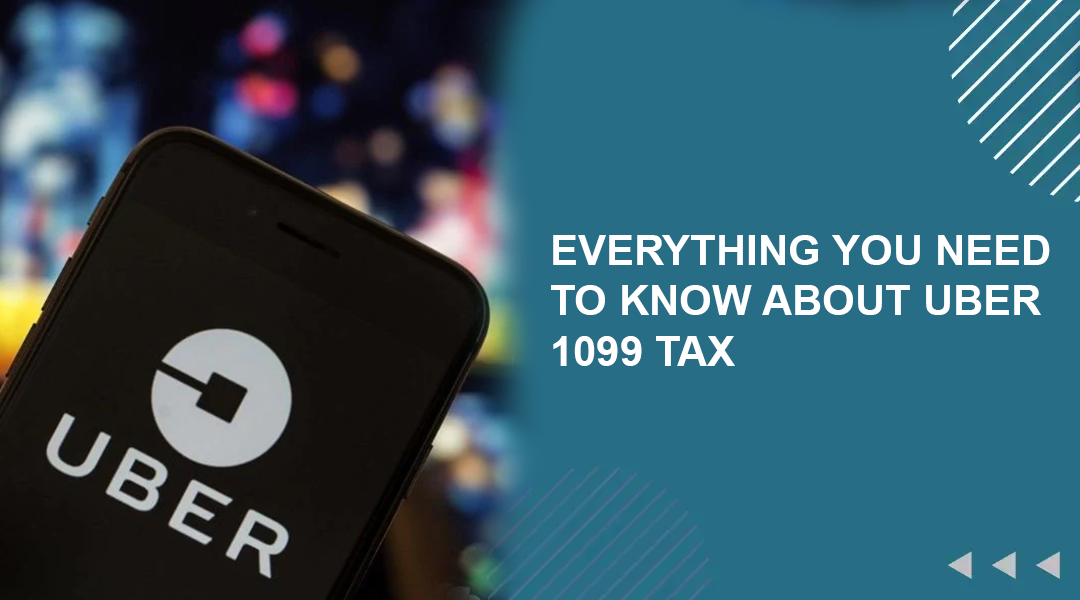Do you work for Uber or another ridesharing company? If so, you are a self-employed independent contractor. This means you’re liable for paying your taxes. The entire procedure can be perplexing, especially if you’re inexperienced with it. So, today, we’ll go over all you need to know about Uber 1099 taxes.
We’ll explain what Uber Eats 1099 is, highlight the tax deductions you can claim as an Uber driver, and assist you in determining how much you owe in taxes this year.
So, whether you’re just starting as an Uber driver or wondering if you’re completing everything correctly and utilizing the Uber Eats Taxes calculator on your tax return, this post is for you.
Table of Contents
What Taxes Do I Have To Pay As An Uber Driver?
Let’s start with the taxes you’re responsible for as a rideshare driver. Because you are self-employed, you must pay two types of taxes as an Uber driver.
Federal And State Income Taxes.
The federal tax rate can range between 10% and 37%, whereas the state tax rate can range between 0% and 10.75%. The amount you pay is determined by your state and your tax bracket, which is frequently based on your wages for the calendar year.
Self-Employment Taxes Are The Other Form Of Tax You Must Pay
As an Uber driver, the IRS considers you an independent contractor rather than an employee. Because you are technically running your own business, Uber will not withhold taxes on your behalf, as most traditional employers do.
Drivers must pay FICA taxes on their self-employment earnings as independent contractors.
Medicare and Social Security taxes are included in FICA, or the Federal Insurance Contributions Act. The Medicare tax rate is 1.45%, while the Social Security tax rate is 6.2%, for a total FICA tax of 7.65%. You will be responsible for both the employer and employee amounts as a self-employed worker, bringing your total to 15.3%.
How Do I Pay Uber Taxes?
Now that you understand your tax liability, you must decide how to file as a self-employed worker. In general, if you earn more than $600 from Uber ridesharing or delivery driving, you must pay taxes on your annual profits. Being an Uber Eats driver tax will be excluded if you made less than 600 with doordash.
When Tax Season Arrives, You May File Your Returns In Four Simple Steps:
- Locate the income information on your 1099 Uber driver tax documents.
- Choose between the real expenses technique and the standard mileage option to deduct your car expenses.
- Gather all of your other business expenses’ records.
- Fill out Schedule C (Profit and Loss From Business), which you’ll attach to Form 1040, with that information.
What Uber Tax Forms Will I Need?
Let’s go over the forms you’ll need during the tax season. To effectively report your revenue, you’ll need three types of Uber Eats tax 1099 forms.
These are their names:
Form 1099-K
This is a breakdown of your gross earnings from your payment processing company, in this case, Uber. Your 1099-K will show the total transaction amount you were paid for each ride or delivery.
Previously, most Uber drivers received a 1099-K if they completed more than 200 rides and earned more than $20,000 in consumer payments. This has since been corrected. To qualify, you’ll simply need to earn $600 in deliveries or rides per year beginning in 2022.
1099-Nec Form
This form superseded the 1099-MISC from previous tax years for non-employee compensation. A 1099-NEC would be issued if you earned more than $600 in non-delivery or ridesharing, such as through referrals.
When Should You File Your Uber Taxes?
Now that you know how to submit your Uber taxes and which deductions you can use to lower the amount you’ll have to pay, there’s only one piece of the jigsaw left to solve: when to file.
Whether you must pay quarterly or annually is determined by your annual earnings. If you expect to owe the IRS $1,000 or more, it is best to pay your taxes quarterly.
The Following Are The Quarterly Tax Deadlines:
- The first quarter ends on April 15th.
- The second quarter ends on June 15th.
- The third quarter begins on September 15th.
- The fourth quarter begins on January 15th.
If you’re obliged to make quarterly payments but don’t, you could face serious consequences. The interest will be charged to your original tax bill and will rise if you delay completing your payment.
If you fail to pay up to 90% of your total Uber Eats driver taxes owing, you will be punished. If it is not paid, the quarterly tax penalty might be as high as 25%.
One of the most prevalent reasons for people failing to pay their quarterly taxes is a lack of savings. To prevent making the same error, utilize a quarterly income tax calculator to see how much you’ll be required to pay. That way, you’ll be ready to go when the deadline arrives.
Last Words
Being an Uber driver is an exciting experience that allows you to meet new people while earning extra money. The tax component can be difficult at first, but getting them correctly is one of the benefits of being your boss.
Remember that if you need tax guidance or have questions about how to record your income, you can always contact an accountant or tax specialist.




